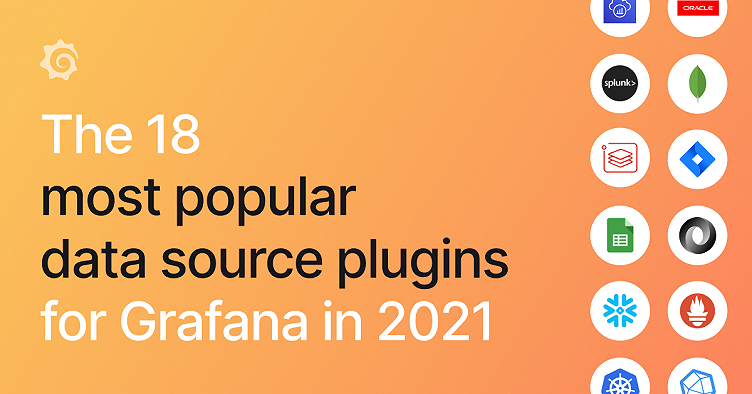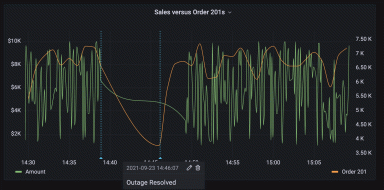
The 18 most popular data source plugins for Grafana in 2021
As a composable solution, Grafana allows you to bring your data into dashboards natively without having to extract it, load it, or transform it. We believe in a “big tent” philosophy, which allows you to choose the tools that best suit your observability strategy, and with our plugins, Grafana is interoperable with more than 100 data sources. We are meeting users where they are on their observability journey, helping to amplify their existing IT investments while providing a fully customizable observability experience that is easy to consume and digest.
As ObservabilityCON opens today, we are excited to welcome the observability community with a three-day virtual event to share ideas, best practices, and the latest developments within the ecosystem.
Along with hosting more than 20 sessions from speakers around the world and announcing new features, we wanted to share some insights on the most popular data sources in Grafana — and what that reveals about the current state of observability.
Many data sources, many insights
With more than 800,000 active installations of Grafana and a very active community, grafana.com’s plugin pages saw close to 2.5 million unique pageviews so far in 2021 (bots not included). Sifting through the Google Analytics data, we organized this list of plugins and types of data sources that had the most pageviews. In no particular order:
- Monitoring apps Zabbix, Prometheus, Splunk, Datadog, and New Relic
- Google Sheets (yes, really: create dashboards from Google Sheets!)
- JSON, the commonly used data format
- Kubernetes, the de facto standard orchestration platform for microservices
- Azure Monitor, for monitoring the availability and performance of applications and services in the Azure Cloud
- AWS X-Ray, a distributed tracing service
- Redis, the open source in-memory data store
- Databases MongoDB, InfluxDB, Oracle, and MySQL
- GitHub, for data about your software development
- Snowflake, the cloud-based data storage and analytics platform
- Jira, for project management and insights into your development process
The usual suspects are well-represented: popular monitoring apps and traditional databases. But the rest of the list shows the breadth of data sources our users are deploying. It also reflects the growing trend toward more distributed systems and microservices (hello, Kubernetes), thanks to the flexibility of cloud services. Today, organizations are using dozens of apps and tools, both open source and proprietary. They are then building foundations on cloud platforms while deploying those platforms on-prem, in co-los, in regionally distributed datacenters, and increasingly, at the edge.
This all clearly signals a strong desire for engineers to create more custom observability solutions vs. settling with general “one-size-fits-most” offerings. The community’s demand for plugins is expanding beyond traditional IT data sources such as JSON and CSV, and observability strategies are built on many different flavors of the three pillars of metrics, logs, and traces.
But as the landscape shifts and grows, one thing remains the same: With our extensive (and ever-growing) list of plugins, Grafana offers a simple and dynamic solution to support the varying needs for monitoring, observing, and managing the apps and tools of any organization.



